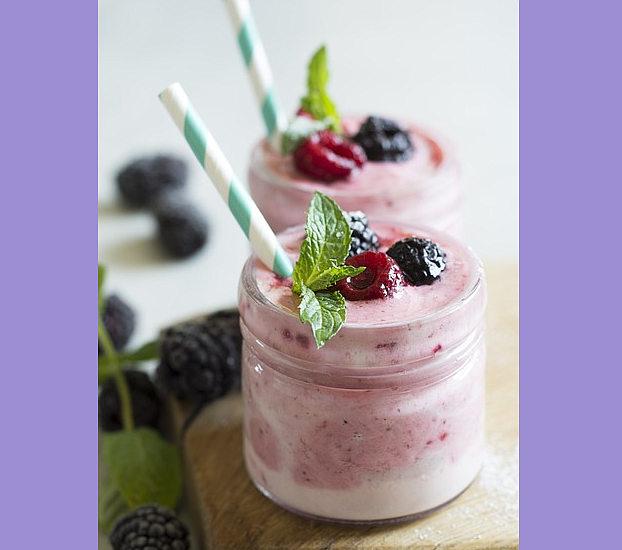Getting the Nutritional Boost with a Smoothie
September 19, 2023 at 8:24 p.m.
...by JOHN SCHIESZER
The study, which was published in the Royal Society of Chemistry's journal Food and Function, examined smoothies to test how various levels of polyphenol oxidase, an enzyme in many fruits and vegetables, affects the levels of flavanols in food to be absorbed by the body. Flavanols are a group of bioactive compounds that are good for your heart and cognitive health. Flavanols are naturally found in apples, pears, blueberries, blackberries, grapes and cocoa.
"We sought to understand, on a very practical level, how a common food and food preparation like a banana-based smoothie could affect the availability of flavanols to be absorbed after intake," said lead author Javier Ottaviani, an adjunct researcher with the UC Davis Department of Nutrition.
Slice an apple or peel a banana and the fruit will quickly turn brown. That happens because of polyphenol oxidase or PPO. It is an enzyme naturally present in those foods. The browning occurs when the food containing that enzyme is exposed to air, cut or bruised. The researchers wanted to know whether consuming freshly prepared smoothies made with different PPO-containing fruits impacted the amount of flavanols available to the body.
The investigators had volunteers drink a smoothie made with banana, which has naturally high PPO activity, and a smoothie made with mixed berries, which have naturally low PPO activity. Blood and urine samples were analyzed to measure how much flavanols were present in the body after ingesting the smoothie samples and capsule. The researchers found that those who drank the banana smoothie had 84% lower levels of flavanols in their body compared to the control.
"We were really surprised to see how quickly adding a single banana decreased the level of flavanols in the smoothie and the levels of flavanol absorbed in the body," Ottaviani said. "This highlights how food preparation and combinations can affect the absorption of dietary compounds in foods."
If people decide to consume fruits or vegetables in the form of smoothies, and seek to benefit from flavanols, it is important to avoid combining the flavanol-rich foods with ones that quickly turn brown after they are cut, like bananas and avocados. Recipes that mix flavanol-rich fruits like berries with oranges or mangoes, instead of bananas, would minimize the loss of flavanols during smoothie preparation. "Bananas remain a great fruit and a great option for smoothie preparation, but not if aiming at maintaining the flavanols in your smoothie," said Ottaviani.
Smoothies have become a popular way to incorporate fruits and vegetables into one’s diet. Increasing your flavonoid intake by eating a balanced diet containing plenty of fruits and vegetables will help to maintain and support overall health. Many studies have shown that flavanols support both cardiovascular health and memory and cognition, especially in older adults.
Nutritionists report that blended fruit isn't nutritionally equivalent to the same fruit left whole. Although, some properties remain present, including soluble fiber, blending can break down insoluble fiber.
Last year, the Academy of Nutrition and Dietetics issued a dietary recommendation, advising all adults to consume 400 to 600 milligrams of flavanols daily for cardiometabolic health. Ottaviani said it may be best to prepare smoothies by combining flavanol-rich fruits like berries with other ingredients that also have a low PPO activity like pineapple, oranges, mango or yogurt. "If you are aiming at increasing flavonoid intake via fruit smoothies, you should not combine flavanol-containing foods like berries with fruits and vegetables that contain a high level of polyphenol oxidase like bananas," said Ottaniani.
The researchers were surprised to see how adding a single banana rapidly decreased the amount of flavanols in the smoothie and consequently on the levels of flavanols in the body. "It was also surprising to find that even if bananas are consumed at the same time as high-flavanol fruits, but not in the same smoothie, the PPO still reduced the amount of flavanols available," said Ottaniani. "We hope that this study equips people with evidence-based suggestions to prepare food at home in a way that supports their goals of achieving a healthier diet, in this particular case, through increasing their intake of flavanols.”
John Schieszer is an award-winning national journalist and radio and podcast broadcaster of The Medical Minute. He can be reached at medicalminutes@gmail.com.





